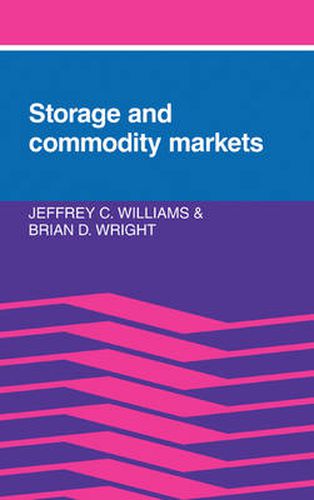Readings Newsletter
Become a Readings Member to make your shopping experience even easier.
Sign in or sign up for free!
You’re not far away from qualifying for FREE standard shipping within Australia
You’ve qualified for FREE standard shipping within Australia
The cart is loading…






Storage and Commodity Markets is primarily a work of economic theory, concerned with how the capability to store a surplus affects the prices and production of commodities. Its focus on the behaviour, over time, of aggregate stockpiles provides insights into such questions as how much a country should store out of its current supply of food considering the uncertainty in future harvests. Related topics covered include whether storage or international trade is a more effective buffer and whether stockpiles are more useful in raw or processed form. Several chapters are devoted to analysing such government programmes as price bands, buffer stocks, and strategic reserves. This material is in the domain of applied welfare analysis with public finance. Other chapters deal with the statistical properties imparted by storage, these should be of interest to those building empirical models of commodity markets, including futures markets. Because the theory presented is sufficiently general, it should be of interest to macroeconomists studying aggregate inventories or savings and to those in operations research studying inventory and pricing policies of large firms.
$9.00 standard shipping within Australia
FREE standard shipping within Australia for orders over $100.00
Express & International shipping calculated at checkout
Storage and Commodity Markets is primarily a work of economic theory, concerned with how the capability to store a surplus affects the prices and production of commodities. Its focus on the behaviour, over time, of aggregate stockpiles provides insights into such questions as how much a country should store out of its current supply of food considering the uncertainty in future harvests. Related topics covered include whether storage or international trade is a more effective buffer and whether stockpiles are more useful in raw or processed form. Several chapters are devoted to analysing such government programmes as price bands, buffer stocks, and strategic reserves. This material is in the domain of applied welfare analysis with public finance. Other chapters deal with the statistical properties imparted by storage, these should be of interest to those building empirical models of commodity markets, including futures markets. Because the theory presented is sufficiently general, it should be of interest to macroeconomists studying aggregate inventories or savings and to those in operations research studying inventory and pricing policies of large firms.